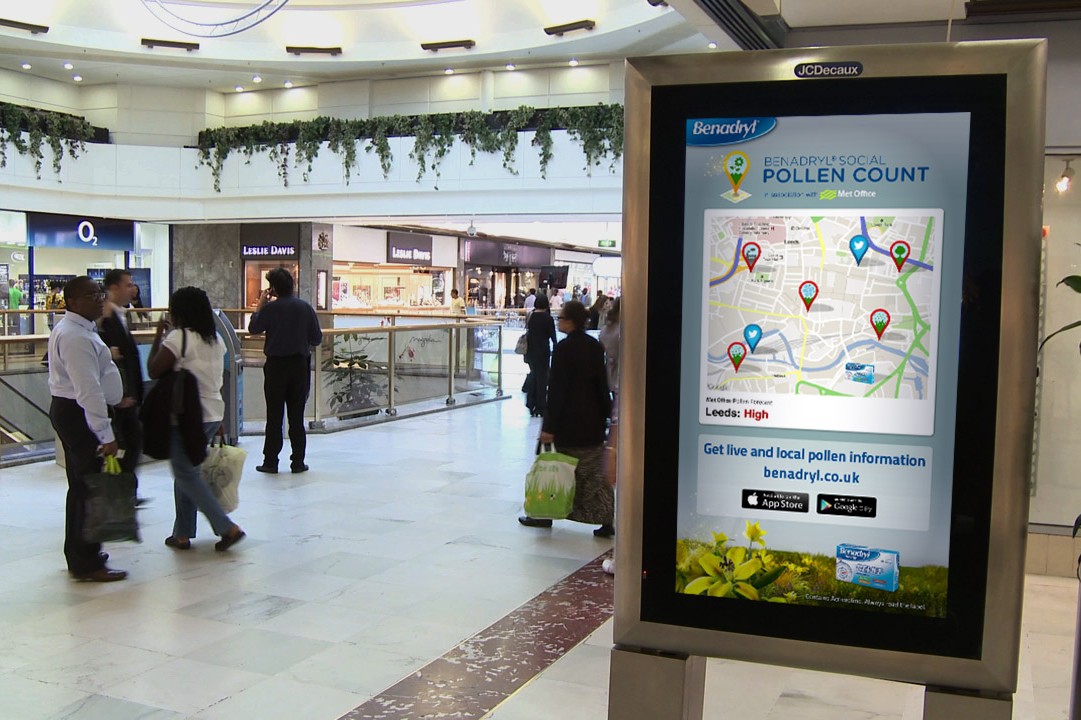
Previously we considered the impact falling margins is having on integrators and looked at the importance of digital signage having relevant and engaging content. Here Steve Montgomery observes how signage networks are getting more complex and being developed with greater levels of interactivity.
Digital signage networks today are becoming more complex and more widely spread, and content and brand owners are demanding more accountability. With increasing complexity comes greater likelihood of local faults, resulting in expensive service callouts, leading operators to lose faith in the operational status of the network and leaving brand owners and retailers disappointed by blank screens at the point of sale.
Integrators need to be able to rely on the equipment vendor, particularly when the displays are deployed over a geographically widely spread area. Physically visiting individual sites to correct operational faults is expensive, and as with many technologies, it is often the simplest problems that cause the most difficulties.
Eddie Bance, sales and marketing director of Harp Visual Communications explains: “The majority of digital signage devices are based on the Windows operating system, which as we all know, is not robust or intended for standalone operation in remote media players running 24/7. As a service provider, you need to be absolutely sure that the underlying computer image is configured correctly for the host device: it must inhibit the numerous dialogue messages on the screen that expect user response and must be able to recover to a known operational condition should there be a lock-up. Ideally this can be done by remote re-booting back to an initial condition.”
Deployment of a digital signage network is no longer simply a question of installing remote players and screens and then sending new content while ensuring it is played out; there are several additional considerations that need to be taken into account. “As with most of these experiential marketing tools, it’s the code behind the screen and how the screen’s content is managed that makes the magic happen out front,” explains Martin Ayrton, managing director of FTP Concepts. “This is becoming more complex as innovative technologies become available and create greater levels of interactivity. It is essential for the integrator to consider the full system workflow in order to scope out a system that meets the expected user demand. As an example, a kiosk installation in Manchester city centre, deployed as the ‘Citylive’ project, incorporated touchscreens and face recognition software. Messages and adverts were displayed according to the make-up of the audience who were invited to respond with selfies uploaded onto a Facebook page. At its peak a picture was uploaded every 90 seconds. The content management and network management systems had to be designed to cope with that, and had the additional complexity that the council wanted to be flexible so they could offer advertisers targeted packages according to customer behaviour and external events, such as the weather.” This is a clear indication of the depth of knowledge and skills that AV system integrators must develop to maintain a leading status in the field.
As digital signage evolves to encompass greater levels of interactivity, targeting and accountability, digital agencies are becoming increasingly involved in a wider range of tools that enable them to deliver additional services around signage. They need to understand the capabilities of the technology before coming up with great ideas. ‘Programmatic creative’ is a term applied to this and is a hot topic with the creative industry.
“The Benadryl DOOH campaign, featured a programmatic approach, which made the messaging more contextual and relevant,” says Neil Morris, founder of Grand Visual. “Rather than a blanket two-week booking, geo-specific messages were only displayed when the right factors were met, making them more appropriate to the environmental conditions and ensuring that there was little wastage. It is not just about data, it is about being smarter with our creative endeavours and delivering messages that are relevant to time, audience demographic, location and mindset. It is programmatic that can’t be blocked or ignored, it is relevant, dynamic and creative and where the future of this industry lies.”
This is precisely where integrators can add value: by manoeuvring themselves into a position to be able to advise and guide these types of organisations, the ones with direct access to the paying customer, in the ‘art of the possible’. “Increasingly CMS businesses like Appspace are providing these services in conjunction with integrators as digital agencies also start to take this more seriously,” Mike Gibbs, consulting systems engineer at Appspace confirms.
Gone are the days when digital signage integrators simply provided a system to a customer, fitted it and then left after a brief explanation of how it should be operated. To be successful, they must now provide a far greater range of services and become fully conversant with the ever-widening scope of interactive and engaging public messaging; or at least team up with knowledgeable and competent partners who do.
Appspace content management
Harp visual communication solutions
FTP Concepts digital solutions
Grand Visual DOOH







